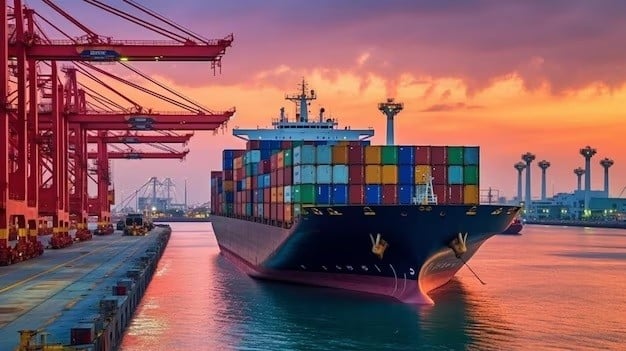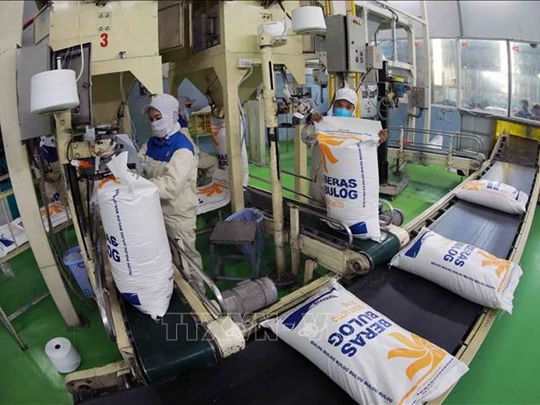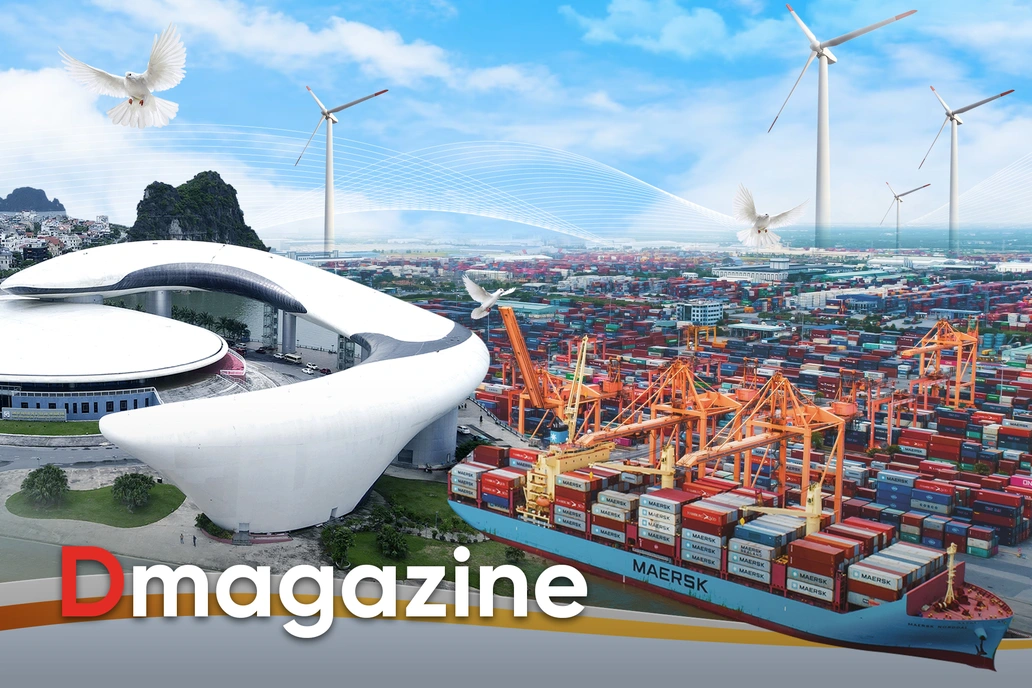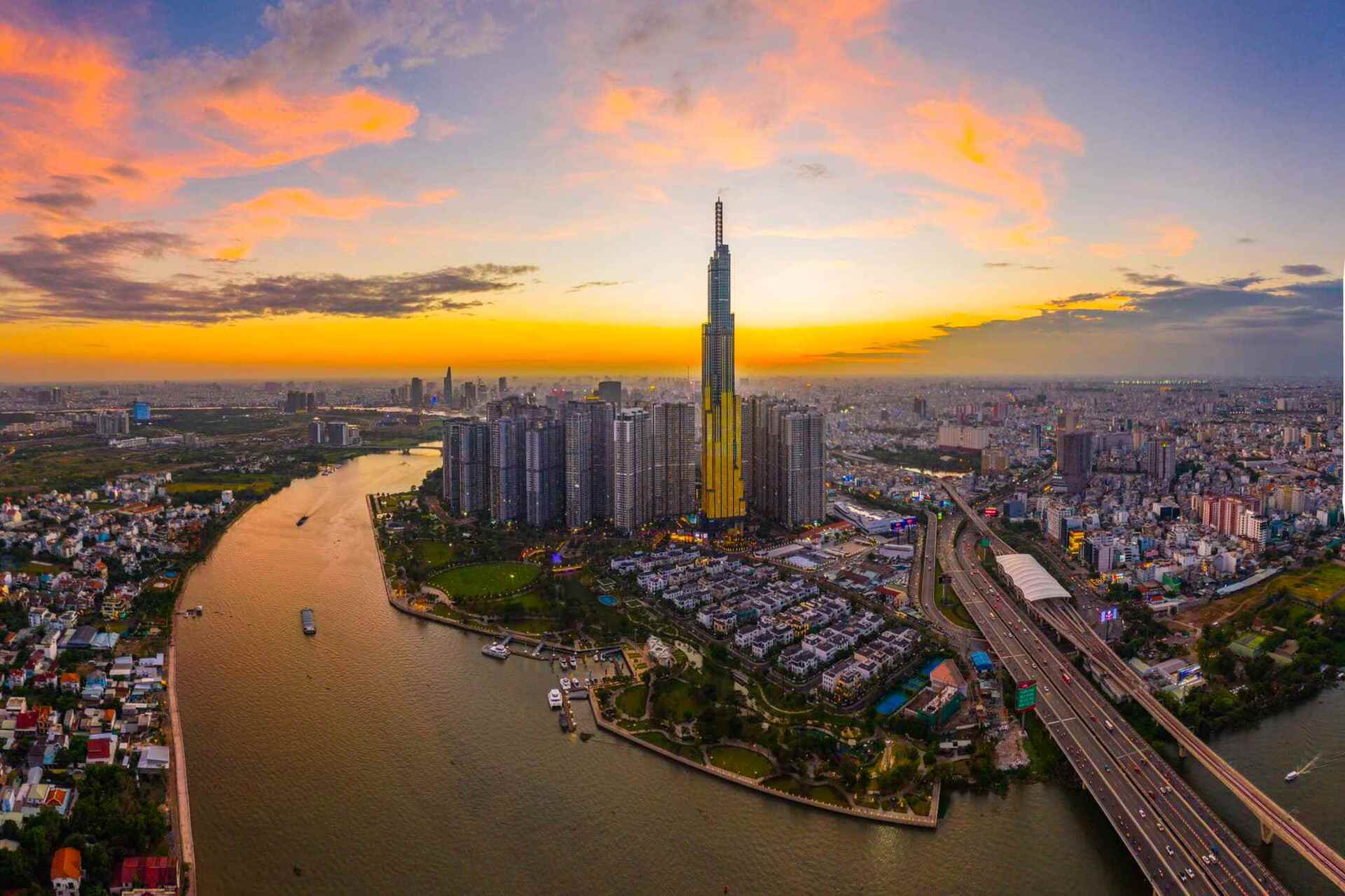Attacks on cargo ships by Yemen’s Houthi militia have affected the stability of the Red Sea route and container shipping rates. The security risks in this route have spilled over to other routes, causing a chain reaction that has disrupted global shipping. With the US and Western countries attacking Houthi targets and deploying additional naval and air forces around the Red Sea, the Houthis are also adjusting their strategy, making the Red Sea crisis more permanent.
Shipping costs skyrocket
The Suez-Red Sea Canal is a vital shipping route connecting Asia and Europe, with nearly 14% of the world’s seaborne trade passing through it. In 2023, 22% of the world’s containers, 20% of motor carriers, 15% of product carriers, and 5% of dry bulk carriers passed through the canal. Since the Houthis attacked cargo ships passing through the Bab el-Mandeb Strait, most shipping companies have chosen to avoid the Suez-Red Sea route.
 |
| Houhti attacks on cargo ships in the Red Sea have disrupted one of the world's most important trade routes. Illustration photo |
As of the end of January 2024, there had been more than 35 attacks on shipping vessels in the Red Sea, mainly container ships. Global shipping giants such as Maersk, Hapag-Lloyd, Robinson Global, Hanxin Shipping, Hualun Wilson, Yang Ming Shipping and Evergreen Shipping have all announced that they will stop accepting cargo in the Red Sea region, while increasing the number of vessels sailing around the Cape of Good Hope in Africa.
More than 90% of global trade is carried by sea, and shipping congestion directly affects the global supply chain and causes a chain reaction. For the container shipping market, the Cape of Good Hope bypass will add $1 million to $2 million in fuel costs per ship, as well as costs for more than 10 days, making estimated arrival times unpredictable and port vessel schedules delayed. In the event that a large number of cargo ships take the same detour, it will also aggravate port congestion, leading to an increase in transit containers, slowing the return of empty containers, which will further exacerbate container shortages.
Taking the mid-December 2023 benchmark, the number of container ships passing through the Red Sea has fallen by more than 70%. Estimated transit times from East Asia to Europe and from East Asia to the Mediterranean have increased by 26% and 51%, respectively, and transit times for grain and coal from the Black Sea to East Asia and from the US East Coast to East Asia have increased by 52% and 77%, respectively.
According to Nikkei, about 47% of toy shipments and 40% of household goods and clothing on the East Asia-Europe route are being affected by rising freight rates and extended shipping times. In terms of industrial materials, 24% of chemicals, 22% of automotive steel plates, 22% of wire and battery insulators are affected, some raw materials are difficult to deliver, and parts factories of major companies in some places such as Tesla and Volvo in Belgium have been forced to suspend production. According to the Spanish port of Barcelona, there have been delays of 10-15 days in maritime traffic.
In addition, due to the accumulation of transportation costs, insurance costs, time costs and safety risks, international freight rates continue to rise. According to data from the Shanghai Shipping Exchange, since the Red Sea crisis, the Shanghai container export freight index has increased for nine consecutive weeks, and freight rates on the East Asia-Europe route have increased by more than 350% year-on-year; East Asia-Mediterranean trade has increased by more than 250% year-on-year.
Inflation in the West
The impact of the Red Sea crisis on trade in key commodities such as oil, gas and food remains relatively limited, but the subsequent changes are of interest. In the oil and gas sector, data from the US Energy Information Administration shows that the Red Sea route and its pipelines will carry 12% of the world’s total seaborne oil trade and 8% of the world’s total liquefied natural gas trade in the first half of 2023, with about 7 million barrels per day passing through the Suez Canal to the Bab el-Mandeb Strait.
The West is concerned that the Houthis’ targeting of oil tankers will impact oil shipments and cause inflation in the West. Even President Biden has publicly explained his decision to launch a military strike against the Houthis, citing inflation as a top consideration.
According to experts, the risk premium from the Red Sea crisis to the oil market is lower than expected due to factors such as continued growth in US oil exports, slowing global demand and the continued easing of US oil export bans on Iran.
In the food sector, the overall global wheat supply in 2024 is sufficient and the impact of the Red Sea crisis on food prices is currently relatively limited, but freight rates may increase due to the extension of wheat transportation time, and the increase in transportation costs will aggravate the import pressure of food insecure countries in regions such as East Africa, the Middle East, and Asia.
Source












































![[Photo] Prime Minister Pham Minh Chinh chairs Government Conference with localities on economic growth](https://vstatic.vietnam.vn/vietnam/resource/IMAGE/2025/2/21/f34583484f2643a2a2b72168a0d64baa)























































Comment (0)